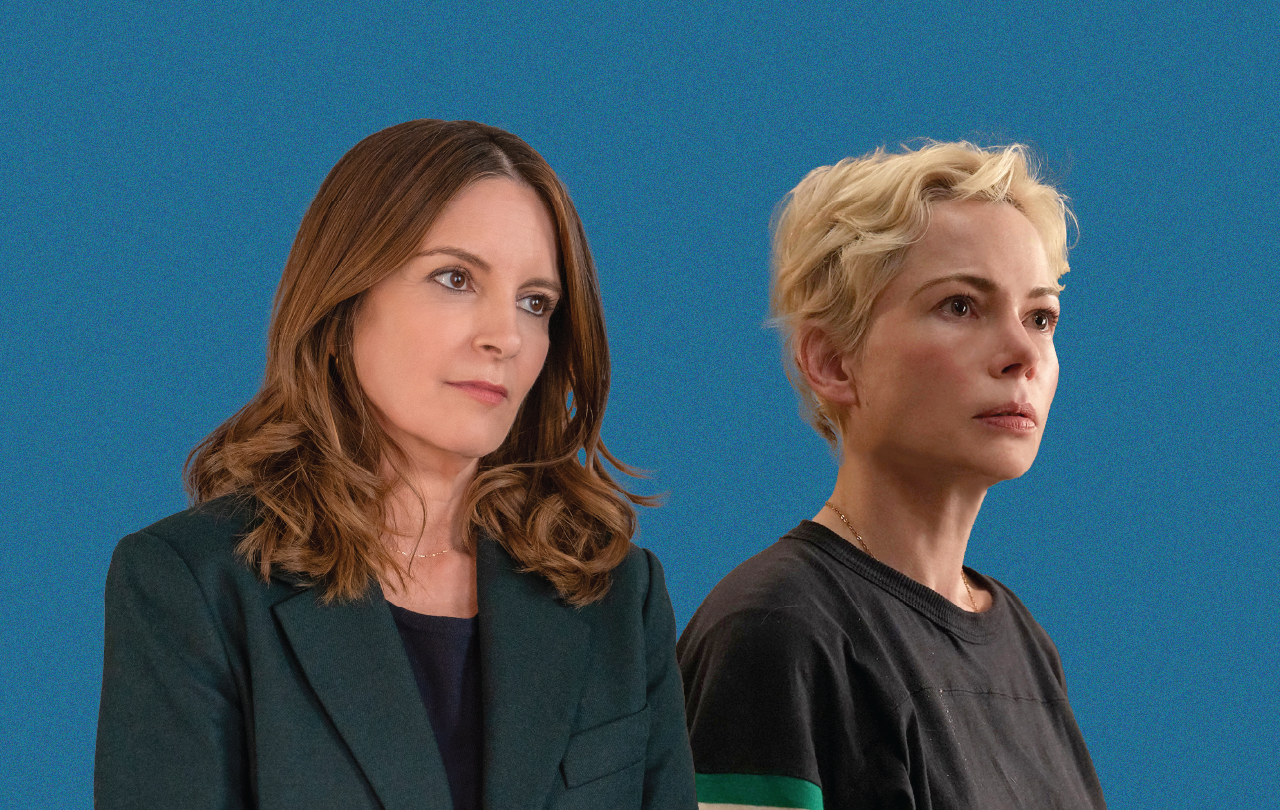
A recent Harvard study revealed an intriguing relationship between religion and how well people feel their lives are going. The study suggests that there is a direct correlation between attendance at religious services and happiness.
The researchers defined ‘human flourishing’ as encompassing all aspects of a person’s life, including happiness, health, purpose, character, and relationships. Perhaps a snappier way to think of this would be “what does it mean to live a full life?.”
There must have been something in the air that leads to asking this big question, because two TV shows have come out close to the release of this study, both of which tackle what it means to have a fulfilling life. While science has only turned its attention to this topic recently, artists, philosophers and storytellers have been grappling with this one for centuries, and as science has neither Tina Fey, nor Michelle Williams, let’s see what the story tellers have to say
The Four Seasons
The Four Seasons is Netflix’s latest comedy drama series based on a 1981 Alan Alda film of the same name. In it, a group of long-time friends in their fifties, who regularly go on holiday with each other have their whole dynamic rocked when Nick (Steve Carell) tells them he plans to divorce Anne, (Kerri Kenney-Silver) his wife of 25 years. Danny and Claude (Colman Domingo and Marco Calvani) are the group’s only same sex couple, but their warm and hedonistic lifestyle is marred by Danny needing surgery for his heart condition, which he keeps putting off. Our point of view characters are Kate and Jack, played by Tina Fey and Will Forte. Initially positioned as the most normal and stable couple of the group, seeing the unhappiness in their friend’s marriages opens a fissure in their own relationship. Kate gets frustrated that Jack appears to turn into a hypochondriac when they’re in private, and Jack resents his embarrassing secrets being shared by Kate as the butt of a joke. As season one draws to a close, we are unsure if these two will repair their marriage.
The Four Seasons is a show about wanting your remaining days on this earth to be filled with meaning and passion. Dying for Sex has arguably the same motivation but on a tragically compressed timescale.
Dying for Sex
Inspired by the story of Molly Kochan and originally shared on the podcast of the same name, Dying for Sex follows Molly (Michelle Williams) as she receives a diagnosis of Stage IV metastatic breast cancer. In a moment of desperate clarity, she decides to leave her husband, Steve (Jay Duplass) and begins to explore her sexual desires for the first time in her life. Aided by her best friend Nikki (Jenny Slate), Molly dives into the world of online dating, finding partners that range from the kinky to incompetent, and finally compassionate. Molly’s one goal is to experience an orgasm with another person for once in her life. An aim that is hindered by a childhood trauma of sexual abuse. Despite the edginess of the title, Dying for Sex is a heartfelt meditation on what it means to find love just as your body is shutting down on you. It includes perhaps the best depiction of the final stages of life for a person with a terminal illness, the show is worth it for that alone.
Yet one constant remains for believers and non-believers, and it is as trite as it is true; love is the key to a fulfilled life.
It is important to note that there is a class element to both of these shows. The Four Seasons places good-looking affluent people in beautiful locations and then invites you to feel invested in their relationship drama, like an episode of 90210 for people in their fifties. Similarly, Dying for Sex sees Molly receive some of the best medical care possible, by virtue of still being on her husband’s health insurance. In a country where free health care is not seen as a basic right, the luxury of the facilities she has to hand starts to seem conspicuous. But this is not oppression Olympics and we’re not here to compare people’s pain. The less money you have will certainly decrease the amount of time you have to ponder the meaning of life, but it’s not a question that should be avoided indefinitely.
The connection between ‘human flourishing’ may be the type of thing that might get jumped on by pastors around the world. But a note of caution is advised here as to how it’s used. Firstly, the Harvard study does not appear to make any kind of distinction between religions. So, if one were to use this study to endorse being a devout Christian, then the same could be said for being a Muslim, Buddhist, Hindu etc.
Secondly, if the church tells people that becoming a Christian will statistically increase their chances of happiness, it’s doing them a disservice because Jesus never promised that. He distinctly told his followers: “Whoever wants to be my disciple must deny themselves and take up their cross and follow me. For whoever wants to save their life[a] will lose it, but whoever loses their life for me will find it.” That’s a difficult line to swallow in the world of retail religion, but it borders on false advertising to ignore it.
Lastly, as critics have pointed out, even if faith improves happiness, it doesn't make the beliefs automatically true! If used as a guiding principle, the pursuit of happiness could have you swapping churches, denominations, even religions until you find what makes you happiest.
These two shows stimulate an interesting thought experiment; whether a relationship with God would have made a difference in their lives? For Kate and Jack in The Four Seasons, the answer may well have been yes. For Molly in Dying for Sex the answer is a little trickier. Jesus doesn’t condone a promiscuous lifestyle, but the drive towards that was borne out of a fundamental lack of connection with her husband. The main thing that Jesus does promise his followers is connection, either directly with him, or with those walking the same path.
You can have a fulfilling life outside of God, it would be disingenuous to say otherwise. Yet one constant remains for believers and non-believers, and it is as trite as it is true; love is the key to a fulfilled life. Molly finally attains it when she finds true love, Jack and Kate begin to lose it when they fear their love might be slipping beyond their grasp.
But the one area where faith might just differ from the secular is that Jesus lived out his time on this earth as a walking talking example of perfect love. Patient, kind, quick to forgive. The kind of example that’s impossible to completely emulate, but still worth trying.
Support Seen & Unseen
Since Spring 2023, our readers have enjoyed over 1,000 articles. All for free.
This is made possible through the generosity of our amazing community of supporters.
If you enjoy Seen & Unseen, would you consider making a gift towards our work?
Do so by joining Behind The Seen. Alongside other benefits, you’ll receive an extra fortnightly email from me sharing my reading and reflections on the ideas that are shaping our times.
Graham Tomlin
Editor-in-Chief





